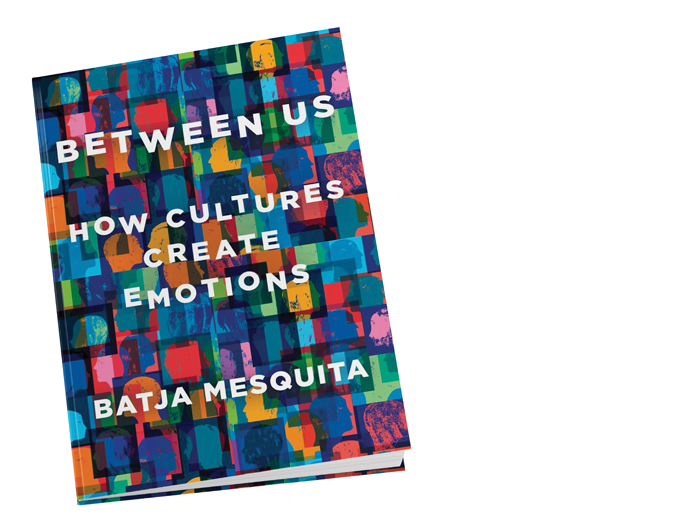 Reviewed by Susan Fader, FaderFocus, Metro NYC, susanfader@faderfocus.com
Reviewed by Susan Fader, FaderFocus, Metro NYC, susanfader@faderfocus.com
Even if you think you’re pretty adept at reading emotional cues and providing the appropriate empathetic reactions, author Batja Mesquita will have you reappraising your skills in Between Us: How Cultures Create Emotions. Mesquita argues that “we cannot understand the emotions of others unless we try to adopt their frame of reference.” Her book provides the blueprint for how to do this.
Mesquita is a pioneer of cultural psychology, which is the study of the role of culture in emotions and the role of emotions in culture and society. She grew up in Holland in a Sephardic Jewish family and came to the United States for postdoctoral work in cultural psychology. Even though she was an expert in the cultural aspects of emotions, was actively researching the topic, and her radar was super-attuned to cultural differences, in America she was repeatedly misreading and misusing emotional cues, which negatively impacted her interaction with colleagues.
Based on that experience, her original research, and the research of others, she developed the MINE and OURS models of emotion. These models challenge the belief that emotional cues, socially acceptable reactions, and empathy are universal across societies or even among people from a shared cultural background living in the same city.
In Between Us, Mesquita compares and contrasts how emotions are understood in the Western or WEIRD (Western, Educated, Industrial, Rich, Democratic) cultures versus non-WEIRD cultures.
In WEIRD cultures, she states, emotions center on how a person feels inside—the MINE emotional model—Mental, INside the person, and Essentialist. In contrast, non-WEIRD cultures tend to follow the OURS emotional model—OUtside the person, Relational, and Situational—which focuses on what is happening in their relationships with the people around them.
However, even within WEIRD cultures, societal norms and expectations of behavior can be different, and that can cause the clash that Mesquita encountered with her academic colleagues when she first came to the United States.
Similarly, she shares the example of a Turkish student in a Belgian school who is falsely accused of vandalism. His emotional response, based on his cultural norm, is to lower his eyes with respect to the teacher who is accusing him. Using her cultural, emotional assumptions, the teacher misreads this as the student admitting he trashed the library. Further on in the book, she shares a similar student/teacher cultural misunderstanding of emotions—this time between the author Ta-Nehisi Coates as a 12-year-old student coming from an impoverished home in West Baltimore and his Baltimore public school teacher.
Because language shapes experiences, it is helpful that an entire chapter is devoted to taxonomy; it was interesting to learn that numerous languages have no specific word for “emotions.” In addition, “not all languages have words for emotion concepts which, in English, are considered important.”
I liked the exploration of how some emotions can have different roles within different cultures, for example, “If shame in WEIRD cultures is ‘wrong’ because it makes your own failure clearly visible to others, shame in honor cultures (cultures based around reputation and protecting it) is ‘right,’ even as it is deeply disturbing.”
Mesquita also emphasizes how an emotion that may be seen as integral in one society may have a very different role in another, such as “happiness is not universally motivating… If happiness informs and facilitates action in WEIRD cultures, in the majority of the world’s cultures, people act according to their societal roles as well as the decisions and desires of others, rather than pursuing their own individual happiness. In fact, individuals in East Asian contexts may not believe that happiness helps their task performance, as white Americans do seem to believe.”
Between Us is a very thought-provoking book. It will help reframe your baseline assumptions about what is being conveyed by emotional cues, as well as the role of empathy.





1 Trackback / Pingback
Comments are closed.